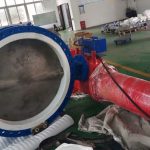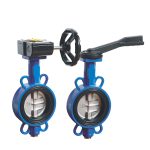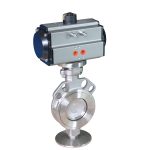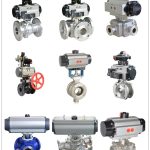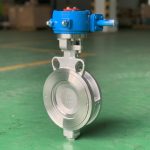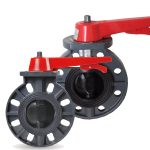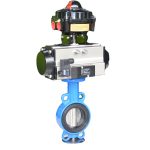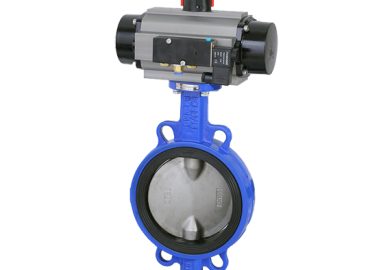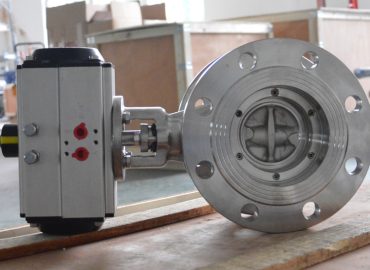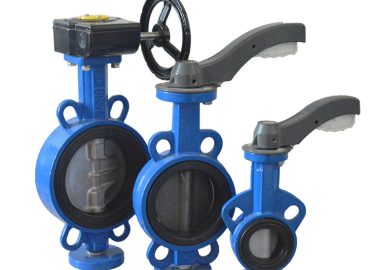Butterfly valves play a crucial role in various industries, controlling the flow of fluids and gases through pipelines with precision and efficiency. At the heart of this essential component is the butterfly valve disc, which directly impacts the valve’s performance and reliability. Over time, the disc may become damaged or worn due to factors such as corrosion, improper installation, or simple wear and tear. This raises the question: is it possible to replace and/or repair a butterfly valve disc? In this blog post, we will explore the processes involved in both replacement and repair, weighing their advantages and limitations, and providing guidance on how to make the best decision for your specific situation.
Introduction
Butterfly valves are integral components in a variety of industries, responsible for controlling the flow of fluids and gases within pipelines. Central to their functionality is the butterfly valve disc, which dictates the valve’s performance and reliability. Over time, the disc may become damaged or worn due to factors such as corrosion, improper installation, or simple wear and tear. This raises the question: is it possible to replace and/or repair a butterfly valve disc? The answer is yes; both replacement and repair options are available depending on the extent of the damage, budget constraints, and long-term maintenance costs. Replacing a butterfly valve disc involves selecting a suitable replacement disc, removing the old disc, installing the new one, and testing its functionality. This option is ideal when there is extensive damage or wear, frequent maintenance issues, or when dealing with an obsolete or discontinued valve design.
On the other hand, repairing a butterfly valve disc can be a more cost-effective solution for minor damage or wear, or when replacement parts are limited. Repair methods may include resurfacing or recoating the disc surface, welding or brazing to fix cracks or holes, and adjusting or replacing the disc’s sealing mechanism. However, there are some limitations and drawbacks to repairing a butterfly valve disc, such as the potential for recurrent issues or further damage, and limited applicability for certain types of damage or valve designs. When deciding whether to replace or repair a butterfly valve disc, it is crucial to consider the severity of the damage, budget constraints, availability of replacement parts and skilled technicians, and industry regulations and standards. Consulting with experienced professionals is highly recommended to ensure optimal butterfly valve performance and longevity.

Brief overview of butterfly valves and their importance in various industries
Butterfly valve are a vital component in numerous industries, including oil and gas, water treatment, chemical processing, and power generation. These versatile control valves are designed to control the flow of fluids and gases within pipelines by utilizing a rotating disc, which opens, closes, or modulates the flow as needed. The compact design and efficient operation of butterfly valves make them a preferred choice for various applications, offering benefits such as quick response times, minimal pressure drop, and ease of maintenance. Their importance in various industries cannot be overstated, as they contribute to the overall safety, efficiency, and reliability of essential processes, ensuring that operations run smoothly and resources are managed effectively.
Explanation of the butterfly valve disc and its role in controlling flow
Wafer utterfly valves are a vital component in numerous industries, including oil and gas, water treatment, chemical processing, and power generation. These versatile valves are designed to control the flow of fluids and gases within pipelines by utilizing a rotating disc, which opens, closes, or modulates the flow as needed. The compact design and efficient operation of butterfly valves make them a preferred choice for various applications, offering benefits such as quick response times, minimal pressure drop, and ease of maintenance. Their importance in various industries cannot be overstated, as they contribute to the overall safety, efficiency, and reliability of essential processes, ensuring that operations run smoothly and resources are managed effectively.
Butterfly Valve Disc Damage
Butterfly valve disc damage can occur due to a variety of factors, impacting the overall performance and efficiency of the valve. Common causes of disc damage include wear and tear from regular use, corrosion resulting from exposure to harsh chemicals or environments, improper installation or operation that puts undue stress on the disc, and manufacturing defects that may not be apparent until the valve is in service. When a butterfly valve disc becomes damaged, it can compromise the valve’s ability to effectively control fluid or gas flow, potentially leading to leaks, system failures, or even safety hazards. Additionally, damaged discs may cause increased maintenance requirements and costs, as well as reduced operational efficiency. In some cases, the consequences of disc damage can be severe enough to warrant immediate intervention in the form of repair or replacement, highlighting the importance of regular inspection and maintenance to ensure the continued reliability and optimal performance of butterfly valves within various industries. By addressing disc damage promptly and effectively, operators can minimize downtime, maintain safety standards, and maximize the lifespan of their butterfly valves.
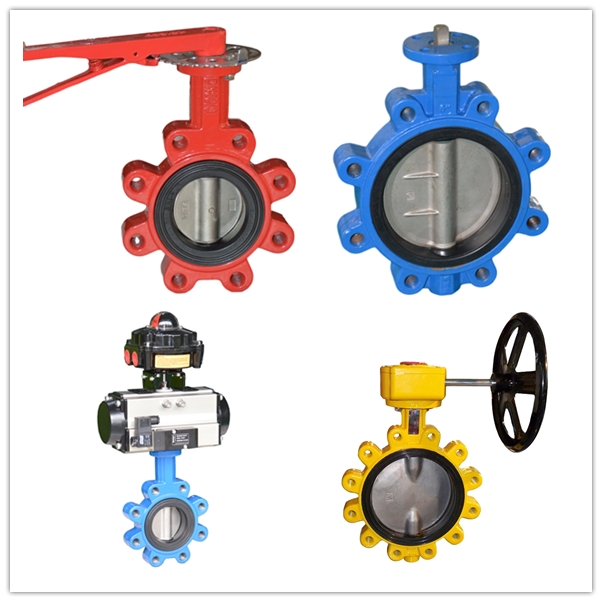
Common causes of butterfly valve disc damage
Common causes of electric butterfly valve disc damage encompass a range of factors that can impact the performance and longevity of the valve. Wear and tear from regular use is an expected cause of disc damage, as the constant opening and closing of the valve can gradually weaken the disc material over time. Corrosion is another frequent culprit, resulting from exposure to harsh chemicals or environments, which can eat away at the disc surface and compromise its structural integrity. Improper installation or operation can also lead to disc damage, as misaligned components or excessive force applied during operation can place undue stress on the disc, causing it to warp or crack. Finally, manufacturing defects may contribute to disc damage, with flaws in materials or workmanship becoming apparent only once the valve is in service. Regular inspection and maintenance are crucial to identifying and addressing these common causes of butterfly valve disc damage, ensuring optimal valve performance and reliability across various industries.
Consequences of a damaged butterfly valve disc
The consequences of a damaged butterfly valve disc can be significant, impacting the overall performance and efficiency of the valve and potentially leading to more serious issues within a system. A damaged disc may compromise the valve’s ability to effectively control fluid or gas flow, resulting in inadequate flow regulation or even leaks. This, in turn, can lead to system failures, operational inefficiencies, and increased maintenance requirements. In some cases, a damaged butterfly valve disc may also pose safety hazards, particularly if it is part of a high-pressure or hazardous materials handling system. Addressing disc damage promptly and effectively is essential to minimize downtime, maintain safety standards, and ensure the continued reliability and optimal performance of butterfly valves across various industries. Regular inspection and maintenance play a crucial role in identifying and mitigating the consequences of a damaged butterfly valve disc, helping operators maximize the lifespan and functionality of their valves.
Replacing a Butterfly Valve Disc
Replacing a butterfly valve disc is a crucial maintenance procedure that can help restore the valve’s performance and efficiency, particularly when the disc has sustained significant damage or wear. The process begins with selecting an appropriate replacement disc, taking into consideration factors such as the valve size, material compatibility, and pressure and temperature ratings. Once the suitable replacement disc is obtained, the valve must be isolated from the system, ensuring that fluid or gas flow is stopped and pressure is relieved before proceeding with the replacement. The valve is then disassembled, carefully removing the damaged disc from its position within the valve body. It is essential to inspect the other components, such as the seat, stem, and seals, for any signs of damage or wear, as these may also require replacement or repair. With the old disc removed, the new disc is installed, making sure it is properly aligned and secured within the valve assembly. Once the valve is reassembled, it is crucial to test its functionality and ensure that it operates smoothly and effectively, with no leaks or irregularities in flow control. If the valve passes the testing phase, it can be reintegrated into the system and returned to service. Replacing a butterfly valve disc is a vital procedure for maintaining the valve’s reliability and longevity, and should be carried out by skilled technicians familiar with the specific valve design and industry standards. By addressing disc damage through timely replacement, operators can minimize downtime, maintain safety standards, and maximize the lifespan of their butterfly valves.
When to consider replacing a butterfly valve disc
Knowing when to consider replacing a butterfly valve disc is essential for maintaining optimal performance and reliability within a system. Replacement should be considered when the disc has sustained significant damage, such as extensive wear or corrosion, cracks, or warping that impairs the valve’s ability to control fluid or gas flow effectively. Frequent maintenance issues, such as leaks or operational difficulties, may also indicate that the disc requires replacement. Additionally, if the valve design is obsolete or discontinued, replacing the disc with a more modern and efficient option can improve overall system performance. Regular inspection and maintenance are crucial in identifying signs of disc damage and determining when replacement is necessary. By recognizing and addressing the need for disc replacement in a timely manner, operators can minimize downtime, maintain safety standards, and ensure the continued reliability and longevity of their butterfly valves.

Process of replacing a butterfly valve disc
The process of replacing a butterfly valve disc involves several key steps to ensure the valve’s optimal performance and reliability are restored. First, the valve must be isolated from the system by stopping fluid or gas flow and relieving pressure to create a safe working environment. Next, the valve is disassembled, carefully removing the damaged disc from its position within the valve body. During this step, it is important to inspect other components, such as the seat, stem, and seals, for any signs of damage or wear that may also require attention. Once the old disc is removed, the new disc is installed, ensuring proper alignment and secure placement within the valve assembly. After the valve is reassembled, it is crucial to test its functionality, confirming smooth operation and effective flow control without leaks or irregularities. If the valve passes the testing phase, it can be reintegrated into the system and returned to service. By following these steps, operators can successfully replace a butterfly valve disc, minimizing downtime and maintaining safety standards while prolonging the valve’s lifespan and functionality.
Advantages of replacing a butterfly valve disc
Replacing a butterfly valve disc offers several advantages that contribute to the overall performance, reliability, and longevity of the valve within a system. By addressing disc damage or wear in a timely manner, operators can restore the valve’s ability to effectively control fluid or gas flow, ensuring optimal flow regulation and preventing leaks or system failures. This proactive approach to maintenance can also help reduce operational costs by minimizing downtime and avoiding more extensive repairs or replacements in the future. Additionally, replacing a damaged disc can enhance the safety of the system, particularly if the valve is responsible for handling high-pressure or hazardous materials. Finally, upgrading to a more modern and efficient disc design can improve overall system performance and energy efficiency, offering long-term benefits for both the valve and the system it serves. By recognizing the advantages of replacing a butterfly valve disc, operators can make informed decisions regarding maintenance and ensure the continued reliability and functionality of their valves.
Repairing a Butterfly Valve Disc
Repairing a butterfly valve disc is an essential maintenance procedure when the disc exhibits minor damage or wear that can be rectified without requiring complete replacement. The process begins with isolating the valve from the system by stopping fluid or gas flow and relieving pressure to create a safe working environment. Next, the valve is disassembled to access the damaged disc, taking care to inspect other components such as the seat, stem, and seals for any signs of damage or wear that may require attention. Once the disc is exposed, the necessary repairs are carried out, which may include addressing surface corrosion, smoothing out minor warping, or fixing small cracks. It is crucial to ensure that the disc’s structural integrity and functionality are not compromised during the repair process. After the repairs are completed, the disc is reinstalled in the valve assembly, ensuring proper alignment and secure placement. The valve is then reassembled, and it is vital to test its functionality, confirming smooth operation and effective flow control without leaks or irregularities. If the valve passes the testing phase, it can be reintegrated into the system and returned to service. Repairing a butterfly valve disc is a cost-effective solution for addressing minor disc damage while maintaining the valve’s reliability and longevity. However, it is important for operators to recognize when disc damage is too extensive for repair and requires complete replacement, ensuring the continued safety and optimal performance of the butterfly valve within the system.
When to consider repairing a butterfly valve disc
Considering the repair of a wafer butterfly valve is essential when the disc exhibits minor damage or wear that does not warrant complete replacement. Signs that a disc may require repair include small cracks, slight warping, or surface corrosion that do not significantly impact the valve’s ability to control fluid or gas flow effectively. Additionally, if the valve experiences minor operational difficulties or leaks that can be traced back to the disc, repair may be a viable option. Regular inspection and maintenance are crucial in identifying the need for disc repair and ensuring that any issues are addressed before they escalate into more serious problems. It is important for operators to carefully assess the extent of disc damage and determine whether repair is a suitable solution or if complete replacement is necessary for maintaining the safety, performance, and reliability of the butterfly valve within the system.
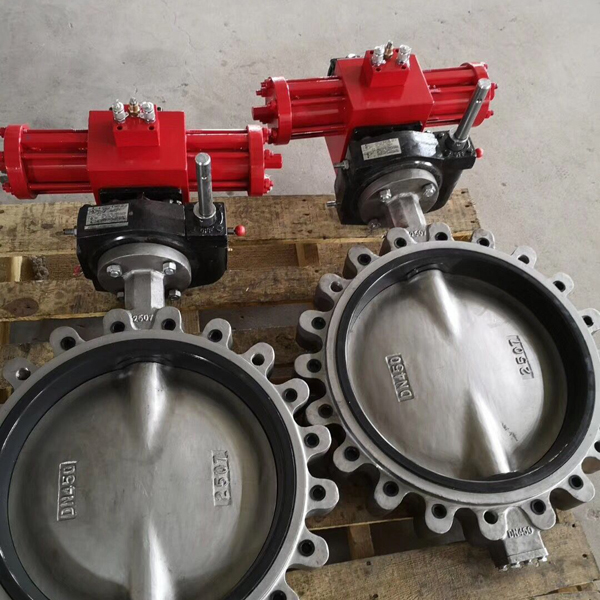
Types of repairs that can be performed on a butterfly valve disc
A butterfly valve disc can encounter various issues or damages during its lifetime, necessitating different types of repairs to restore its functionality and extend its service life. Some common repair methods include surface treatment, reshaping, and machining, welding and crack repair, stem connection repair, seal replacement, balancing and alignment, coating and plating, and replacement. Surface treatment involves cleaning and polishing the disc, followed by applying a protective coating to prevent future corrosion. Reshaping and machining address the disc’s warping or deformation, while welding and crack repair address small cracks or fissures. Stem connection repair ensures proper attachment and smooth operation, while seal replacement addresses damage or wear to ensure proper sealing. Balancing and alignment maintain optimal disc performance, while coating and plating improve durability. In severe cases of damage, replacement may be necessary. Consulting with a valve specialist is crucial to determine the appropriate repair method based on the issue encountered with the butterfly valve disc.
Limitations and drawbacks of repairing a butterfly valve disc
While repairing a butterfly valve disc can be a cost-effective solution, there are some limitations and drawbacks that should be taken into consideration. For example, repairing a disc may not always be possible if the damage is too severe or if the disc has reached the end of its service life. Additionally, repairs may not be as effective as replacing the entire valve, especially if the repair method used is not appropriate to the specific issue encountered. In some cases, repairs may also compromise the safety and functionality of the valve. Furthermore, repairs may require downtime for the system, which can result in lost productivity. It is important to consult with a valve specialist to determine the most appropriate repair method and decide whether repair or replacement is the best option based on the severity and type of damage encountered.
Choosing Between Replacement and Repair
When it comes to deciding whether to replace or repair a damaged item, there are many factors to consider. Both options have their own advantages and disadvantages, depending on the situation. One of the main factors to consider is the severity and type of damage. If the damage is minor and can be easily repaired, then it may be more cost-effective to go ahead with the repair, as opposed to replacing the entire item. On the other hand, if the damage is extensive and beyond repair, replacement may be the only option. Another important factor to consider is the age and condition of the item. If the item is relatively new and in good condition, then repairing it may be a good option, especially if it is still under warranty. However, if the item is old and has undergone multiple repairs in the past, replacement may be the better option, as it will provide a longer-term solution and may be more cost-effective in the long run.
Maintenance and upkeep is also an important consideration. If the item requires frequent repairs and maintenance, then replacement may be the better option, as it will reduce the need for ongoing repairs and maintenance costs. Similarly, if the item is difficult to maintain or repair due to its design or availability of parts, replacement may be the better option. Finally, the cost of replacement versus repair must also be taken into account. In some cases, repair may be less expensive than replacement, but in other cases, the cost of repair may be close to or even exceed the cost of replacement. It is important to weigh all the factors and make an informed decision based on the specific circumstances.
In summary, choosing between replacement and repair depends on several factors, including the severity and type of damage, the age and condition of the item, maintenance and upkeep requirements, and the cost of replacement versus repair. A careful evaluation of these factors can help determine whether replacement or repair is the better option.
Factors to consider when deciding whether to replace or repair a butterfly valve disc
When deciding whether to replace or repair a butterfly valve disc, there are several important factors to consider. One of the primary considerations is the extent and type of damage to the disc. If the damage is minor and can be easily repaired, then it may be more cost-effective to repair the disc rather than replacing the entire valve. However, if the damage is extensive and beyond repair, or if the valve has reached the end of its service life, replacement may be the better option. Another important factor to consider is the age and condition of the valve. If the valve is relatively new and in good condition, it may be more practical to repair the disc. However, if the valve is old and has undergone multiple repairs in the past, replacement may be a better choice, as it will provide a longer-term solution and may be more cost-effective in the long run.
The severity and frequency of use is also an important consideration. If the valve is used frequently and in critical applications, replacement may be the better option in order to ensure continued safety and reliability of the system. Similarly, if the valve is difficult to maintain or repair due to its design or availability of parts, replacement may be the more practical option. Finally, the cost of replacement versus repair must also be taken into account. In some cases, repair may be less expensive than replacement, but in other cases, the cost of repair may be close to or even exceed the cost of replacement. It is important to weigh all of these factors carefully and make an informed decision based on the specific circumstances in order to ensure the best possible outcome for your system.
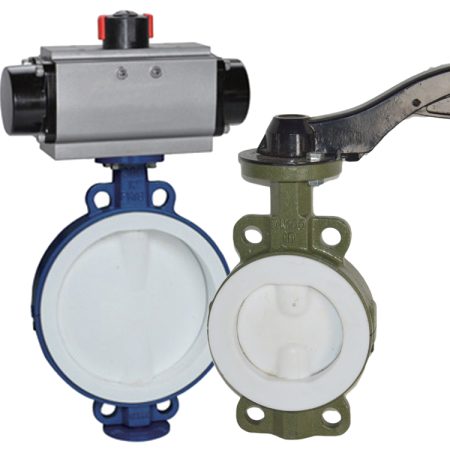
Importance of consulting with experienced professionals for guidance
When it comes to making important decisions about repair or replacement of equipment, consulting with experienced professionals can be of great importance. Experienced professionals have the knowledge and expertise necessary to evaluate the specific circumstances of your situation and provide guidance that is tailored to your needs. They can help you assess the severity and type of damage to your equipment, the age and condition of the item, and the cost and practicality of repair versus replacement. Additionally, they can provide advice on maintenance and upkeep, as well as recommend appropriate repair methods or replacement options. Seeking guidance from experienced professionals can help ensure that you make informed decisions that are aligned with your goals and priorities and can help you avoid costly mistakes or missteps. As such, it is always advisable to consult with professionals when making important decisions about equipment repair or replacement.
Conclusion
In conclusion, when it comes to deciding whether to replace or repair equipment, there are several factors that must be taken into account. These include the extent and type of damage, age and condition of the item, maintenance and upkeep requirements, frequency of use, and cost of replacement versus repair. Making an informed decision requires careful evaluation of each of these factors, as well as consulting with experienced professionals for guidance. Ultimately, the right choice will depend on the specific circumstances of your situation, your goals and priorities, and your budget. By carefully considering these factors and seeking guidance from experts, you can make the best possible decision for your needs and ensure that your equipment functions optimally for as long as possible.
Recap of the key points discussed in the post
In this post, we discussed the factors that should be considered when deciding whether to replace or repair equipment. Specifically, we highlighted the importance of evaluating the severity and type of damage, age and condition of the item, maintenance and upkeep requirements, frequency of use, and cost of replacement versus repair. We also emphasized the need to seek guidance from experienced professionals when making these decisions in order to ensure that the best possible outcome is achieved. By carefully considering these factors and seeking expert advice, we can make informed decisions that are aligned with our goals and priorities, and ultimately ensure that our equipment functions reliably and optimally for as long as possible.
Emphasis on the importance of proper maintenance and timely intervention to ensure optimal butterfly valve performance
Proper maintenance and timely intervention are crucial for ensuring optimal performance of butterfly valves. Routine maintenance activities such as cleaning, lubrication, and inspection can help prevent minor issues from becoming major problems. Regular maintenance also helps to identify potential issues early on, allowing for timely intervention and repair before significant damage occurs. In addition, proper maintenance can extend the service life of butterfly valves, reducing the need for costly replacements and downtime. It is important to have a clear maintenance schedule in place and to follow manufacturer guidelines for maintenance requirements. By emphasizing the importance of proper maintenance and timely intervention, we can ensure that butterfly valves perform optimally and reliably, contributing to the safety and efficiency of our systems.
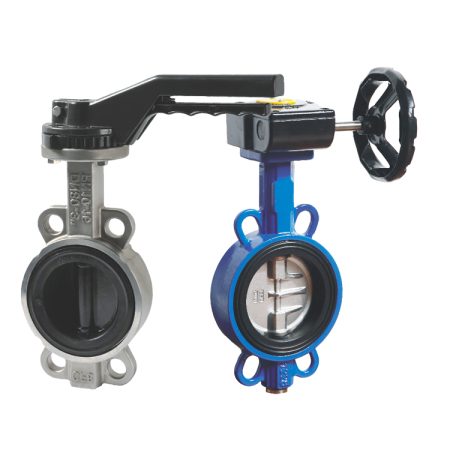
Encouragement to seek professional assistance when faced with butterfly valve disc issues
If you are facing issues with your butterfly valve disc, it is important to seek professional assistance. Attempting to repair or replace the disc yourself can lead to serious safety hazards and further damage to your system. Seeking guidance from experienced professionals will ensure that the issue is diagnosed accurately and that the appropriate repair or replacement solution is implemented. Professional assistance can also help you identify any underlying issues that may be contributing to the problem, allowing you to address them before more significant problems arise. Additionally, professionals can provide advice on maintenance and upkeep, helping you to prevent future issues from occurring. By seeking professional assistance for butterfly valve disc issues, you can ensure the safe and efficient operation of your system and avoid costly mistakes or missteps.



